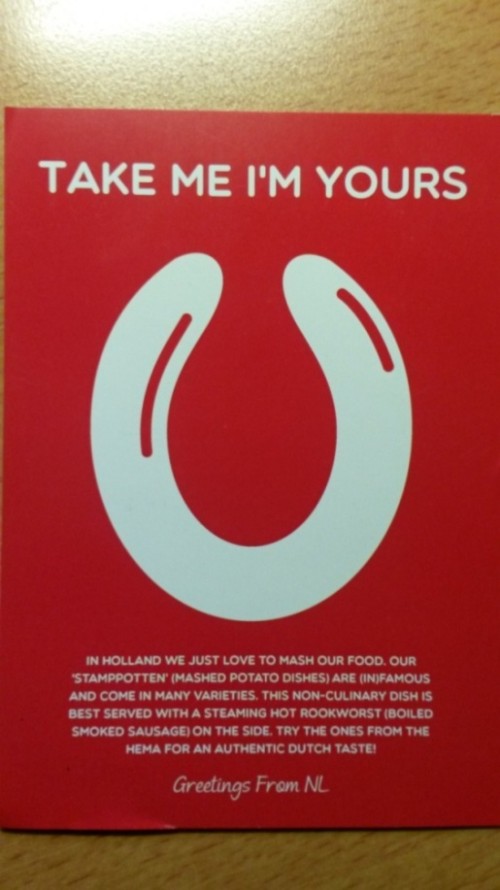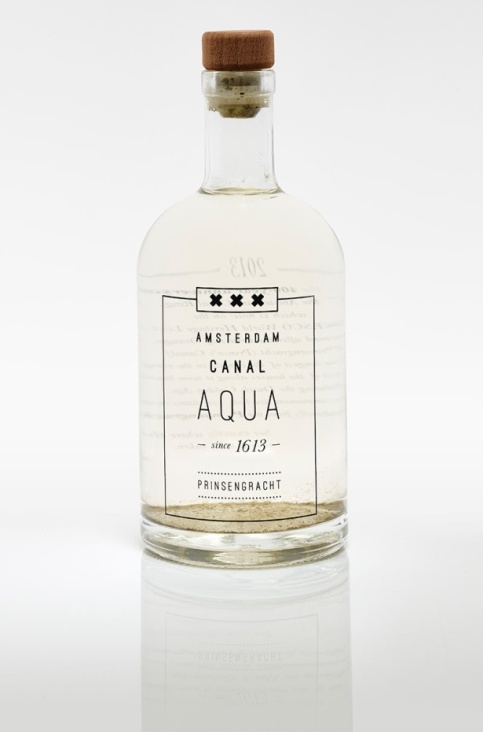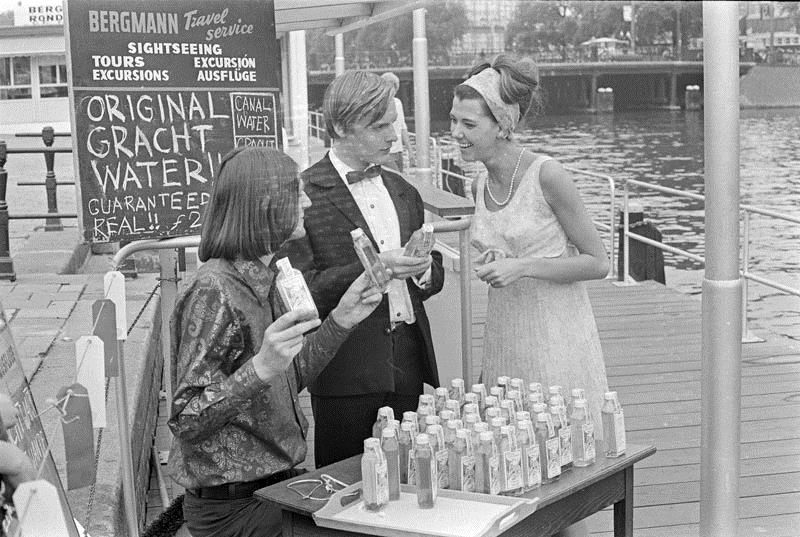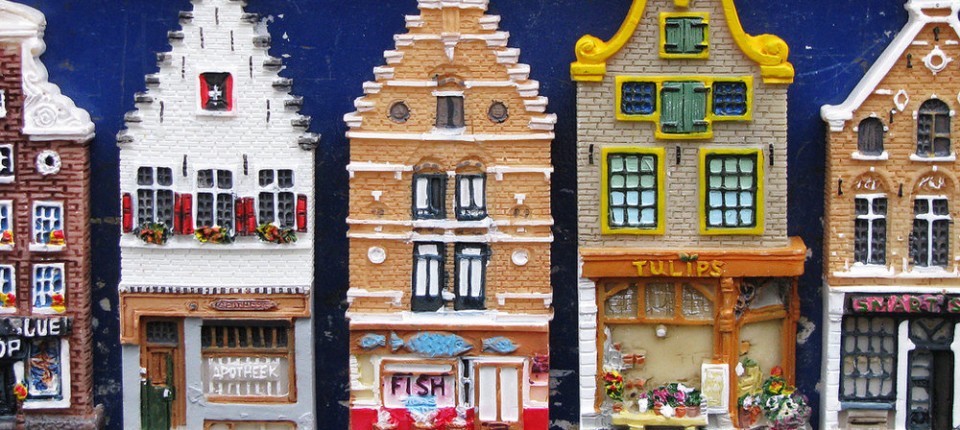The growing consumer demand for locally produced products in cities has led to new forms of urban consumption and production processes. Products that are locally grown, processed or produced are often defined as ‘authentic’ by consumers and producers. For instance, growing environmental awareness and concerns about health effects and quality of products, has led to an increasing demand for organically and locally produced food by consumers and producers. If we look at the city of Amsterdam, consumption of organic and ‘authentic’ food is getting increasingly popular. Organic products are offered by supermarkets as the Marqt and the Ekoplaza, who consider themselves as authentic food stores by selling ethical, organic and local food as an alternative to the traditional supermarket. The origin of where the product is produced plays an important role in the growing demand for these products; the place shows the uniqueness of the product. Souvenirs are products which are definitively linked to a certain place; they function as messengers which give meaning to a place. These objects are usually purchased during travel by tourists and may remind the consumer of past experiences and places visited.
One would expect a growing interest in local production and consumption of souvenirs as well. A growing interest in souvenirs that are perceived as original and authentic by consumers and producers, instead of the mass produced tulips, clogs and windmills which make no explicit claim to authenticity. Let’s see if this is the case in Amsterdam, the capital of the Netherlands, by first looking into some background literature while drawing the picture by two examples of authentic consumerism.

Authentic Souvenir: Hema sausage
Consuming Authenticity
The rising demand for locally-produced products is linked to a particular lifestyle: tastes for specific consumer goods are implicitly socialized by status, social class, and income or are perceived as a way to integrate into new social groups (Bourdieu, 1984), According to Zukin (2004), consumption is an ‘institutional field’, a set of interconnected economic and cultural institutions centred on the production of commodities. New consumer preferences for authentic and locally-produced products are predominately related to the taste of the highly educated urban middle class.
Products are purchased and consumed by the middle class to construct an identity and to identify themselves with the images associated with prestige brands. For instance, highly educated citizens are more likely to buy organic food products at the Marqt and Ekoplaza then the less-educated lower class. The consumption of these local products is related to the urge for authenticity by the urban middle class. By consuming goods that are not purchased by a large public, consumers aim to distinguish themselves from the mainstream crowd. This suggests that consumers buy products which reflect actual or aspirational self-reflection; the products reflect details about their lifestyles. It would be reasonable to assume that this is also applicable to the purchase of souvenirs. Purchasing souvenirs could provide an opportunity for self-expression and positioning, as a means of prolonging the experience for one’s own consumption.
Local Production of Souvenirs
Local producers recognize these developments of authentic consumerism. Chrissie Cremers, creative director and brand owner of the souvenir brand Greetings from NL, designed a souvenir line that includes modern, authentic, and local products. Cremers acknowledged that the authentic and local products she designed are not wished by everyone. The products are especially purchased by the cosmopolitan tourist, not the average tourist. According to Cremers, the new cosmopolitan consumer is young, entirely motivated by culture in visiting a certain destination and more able to represent the creative and modern character of Amsterdam and the Netherlands.
This particular consumer demands a new product of high-quality that cannot be found in every store. Cremers: “The local consumer, especially the western consumer, doesn’t want another souvenir from China. The western consumer wants to know the story behind the product and is looking for a high-quality product that is produced in a good way”. The fundamental idea behind the company consists of eco-friendly and local production to stimulate the local economy. According to Cremers, this way of production leads to sustainability and transparency of the production processes. Besides that, it is rather misleading that a large number of mass-produced souvenirs is signed with ‘made in Holland’ whilst they are actually produced in China or India.
Furthermore, it appears to be important that the products from Greetings from NL represent the place where they come from. Cremers wanted to create a new brand for souvenir products “that is actually more contemporary and representative for what Holland is” instead of the old-fashioned and outdated mass-produced products. Products were originally intended to be sold for tourists; however, they are purchased by Dutch companies and customers as well.
In addition, there are only a few producers in Amsterdam dedicated to the production of authentic and locally produced souvenirs. The ordinary tourist is probably not interested in purchasing authentic souvenirs in large numbers. It appears that the average tourist is still interested in the windmills, clogs and tulips and souvenirs that are related to Amsterdam’s pot-smoking scene or Red Light District. Apparently, the new supply of authentic souvenirs appeals more to the western consumer and the cosmopolitan tourist who purchase these souvenirs to distinguish themselves from the mainstream crowd and to identify themselves with a contemporary and modern image of Holland.

Original Grachtenwater
Place in Product
Designer and art director Glenn Doherty stepped into the authentic consumerism niche and came up with the idea to design a souvenir for people that “might appreciate a crafted product over a cheaper mass-produced one”. Inspired by the 400 year anniversary of the canals last year, he designed a product that can be identified as a symbol that represents a specific place of origin. The Amsterdam Canal Aqua Bottle is a project that consists of a set of four bottles, filled with water taken from the Prinsengracht, Keizersgracht, Herengracht, or Singel. A QR-code on each of the four bottles refers to the exact location the water was taken from. The souvenir was not created for the masses; the price of the product is 50 euros.
According to Doherty, the project could be useful to reshape the image of the city. “Mass-produced souvenirs only increase the negative stereotype of the city. By highlighting the local craftsmen and people involved in this project, Amsterdam could profile itself as a city that’s interesting and multi-layered – not only to tourists. It is imperative to establish a relationship with local craftsmen for a project so deeply rooted with the city – to keep their traditions alive and at the same time make the project real and authentic”. The project shows the uniqueness of the product, the creative element and the process of crafting a product by creating a souvenir that is not perceived as a commodified product for tourist consumption. It appears to be that this project is aimed to preserve craft traditions and to maintain cultural heritage. Authenticity is in this sense related to the promotion of traditional culture and place. In addition, knowledge about the producer and the production process behind the product strengthens the notion of authenticity.

Grachtenwater was originally sold as a product in Amsterdam in 1967
Differing Notions of Authenticity
The growing interest among consumers to purchase local products is not applicable to the average tourist because the notion of ‘authenticity’ appears to be different. The urban middle class – or the western, cosmopolitan consumer – perceives authenticity as something that is linked to the consumption of products that are not purchased by the masses in order to distinguish themselves from the mainstream crowd. For the ordinary tourist, windmills, tulips and clogs capture the unique qualities of a place and are transported home as reminders which made the place special.
It is therefore a different constructed or suggested notion of authenticity that visitors carry home than is perceived by urban citizens of local products. However, the emerging interest of the cosmopolitan tourist in authentic souvenirs indicates that new tourism consumers are demanding local products. The desire of new products by this particular segment of tourists indicates that a more locally-driven and authentic form of tourism can be noticed in the city of Amsterdam which gives a new perspective on the role of local products in the needs and expectations of cosmopolitan tourists visiting a particular place.




